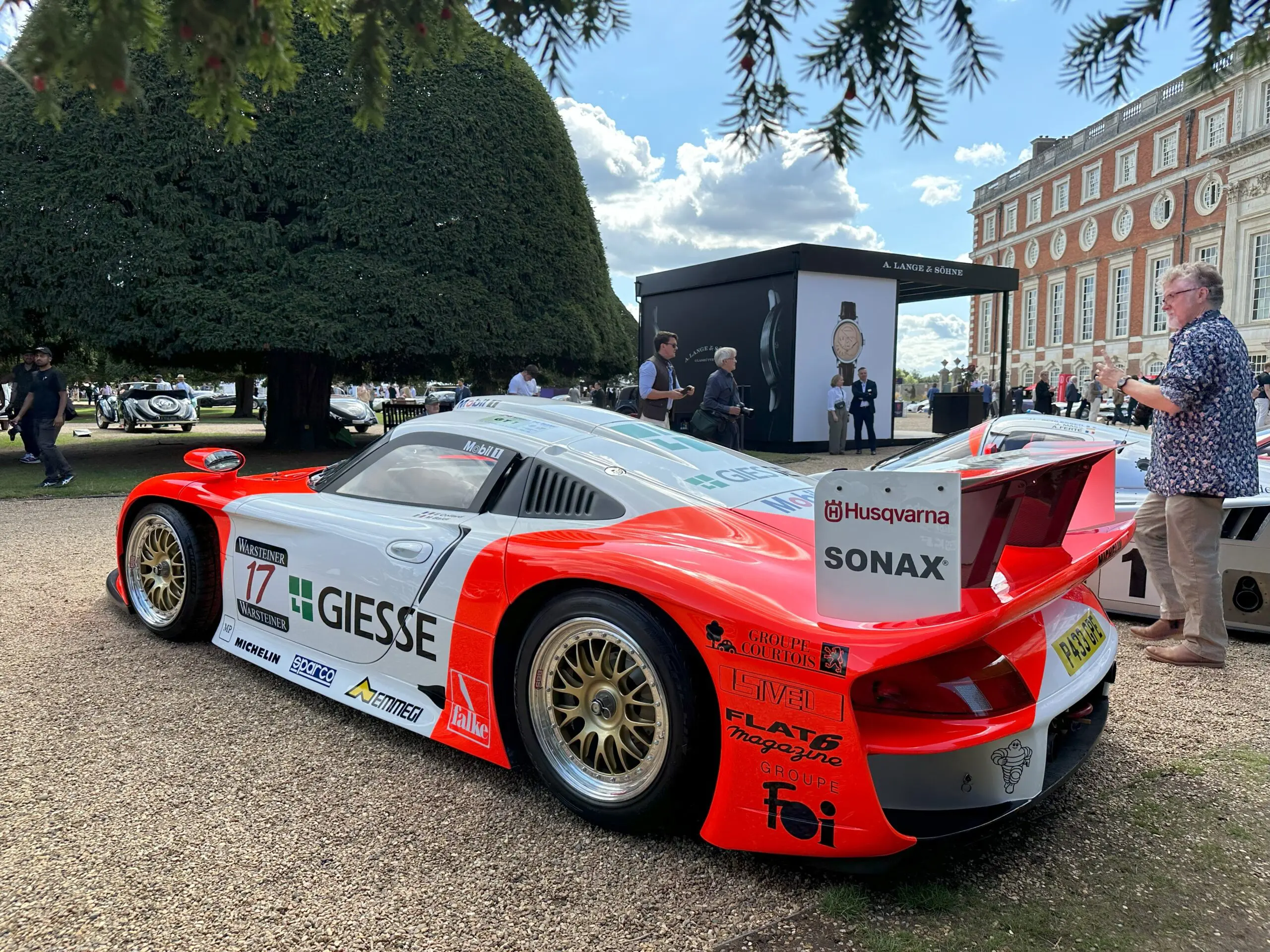How to Understand the Legendary 1997 Porsche 911 GT1 Evo and Why It Still Inspires






The Porsche 911 GT1 project was born in the mid-1990s, aimed at conquering the GT1 class in endurance racing. Porsche flipped the usual script: it built a race car first, then crafted a road-legal version to meet homologation rules.
By 1997, Porsche offered an Evo version – a refined, evolution-spec racing car that pushed the concept further. This article explores how the GT1 Evo balances raw race credibility with road-legal allure.
We saw this iconic 1997 Porsche 911 GT1 Evo at the 2025 Concours of Elegance held at Hampton Court Palace. This car was one of many that grabbed my attention, you can see much more Concours of Elegance content here, and videos on our YouTube Concours of Elegance playlist.

From Track to Tarmac: Origins & Purpose
To enter GT1 racing, manufacturers had to produce a limited number of road versions. Porsche’s approach was unique: rather than adapting a road car for racing, it leveraged prototype racing technology and added just enough “road bits” to qualify.
The original GT1 launched in 1996. It placed strong at Le Mans and in BPR series events, reinforcing Porsche’s confidence in its strategy.

In 1997, faced with new rivals and tougher regulations, Porsche introduced the Evo version. The updates included aerodynamic changes, a redesigned front suspension, and a sequential gearbox for racing readiness.
Technical Highlights
The heart of the GT1 Evo is a 3.2-litre twin-turbo flat-six, derived from Porsche’s endurance racing hardware. In race trim, the Evo could deliver around 600 bhp at 7,200 rpm. The torque curve was strong – Porsche quoted 600 Nm (≈ 443 lb-ft) at ~4,250 rpm in road-legal versions.
Because the Evo was focused on racing, many parts leaned toward performance over comfort: aggressive turbo boost, high rev ceiling, and symptom-free response under load.
The Evo’s bodywork was thoroughly revised. Porsche refined airflow management, increased track width, and adjusted suspension geometry to improve grip and stability.

Carbon fibre panels and a lightweight frame kept mass down. The road-legal “Straßenversion” copies shared much of the same structure, though with softer damping and minor modifications for road use.
Porsche also gave the road version more accessible suspension, slightly raised ride height, and steel brakes to conform with street requirements.
Racing Pedigree & Legacy
The 1997 Porsche 911 GT1 Evo is one of just nine customer GT1 cars built. This particular chassis was contested by Konrad Motorsport, JB Racing and Larbre Compétition in the FIA GT series until the end of 1998, finishing its competitive career wearing the striking PlayStation livery.
In the 1997 FIA GT season, the Evo ran under tight restriction rules. Porsche faced stiff competition from Mercedes-Benz and McLaren. Despite this, the GT1 Evo achieved respectable finishes at Le Mans: it placed 3rd and 4th in the GT1 class (5th and 8th overall) behind McLarens.
Later, in 2014-15, one EVO-spec GT1 was restored to street-legal status – reportedly the only one in existence. Its engine was tuned to produce about 592 bhp. In 2016, that car appeared at auction with a high estimate of USD $3.4 million.
To this day, the GT1 Evo occupies a rare niche—more extreme than most road Porsches, but merging racing soul and road legitimacy in a way few supercars do.
Driving Experience & Character
Driving a road-prepped GT1 Evo (or Straßenversion) is a step into high drama. The turbo flat-six is sharp, the response immediate, and the sound raw. You feel every nuance of grip change.

On a twisty B-road in the UK, the car rewards finesse. You dial in throttle, braking, direction with clarity. The chassis and aerodynamic balance shine at speed.
Yet, it demands respect. The stiff setup, narrow suspension margins, and power delivery require concentration. There is little forgiveness for errors. But when all parts align, driving becomes a visceral pleasure.
Why It Matters
The 1997 Porsche 911 GT1 Evo stands as a bold statement in the evolution of modern performance cars. Racing and road blur together, and drivers tame extreme machines just enough for legal roads.
It also highlights Porsche’s willingness to take risk: building a near-prototype and convincing homologation boards that it qualifies as a “911.”
For collectors and drivers today, the GT1 Evo isn’t just about speed. It’s about owning a piece of motorsport history that still turns heads and stirs emotion.

Conclusion
The 1997 Porsche 911 GT1 Evo merges extreme racing ambition with legal-road possibility. It is rare. It is provocative and It remains unforgettable.
Would you accept its raw drive over modern comforts? Could you handle its demand for attention and finesse day in, day out? Share your thoughts – I’d love to read your opinion in the comments.
Sign for our newsletter to be notified about our competitions, and you could win, in the future, a complimentary pair of tickets to this wonderful show.

Do also follow us on YouTube, give us a like and follow us on our social media channels, we are on Facebook, Instagram, Twitter/X, and TikTok.
Read more on
- Beautiful Cars
- Car Shows
- Car Stories
- Classic Cars
- Cool Cars
- Desirable Cars
- Hypercars
- Iconic Cars
- Supercars
- The Cars

We're on X (Twitter). Follow us for news, reviews, galleries, competitions and more...
Mycarheaven are on social media channel X (Twitter). Follow us for news, reviews, galleries, competitions and more...
Check us out here.Related Stories
Advertisement Advertisement
Advertisement Advertisement
Advertisement Advertisement
Advertisement Advertisement
Advertisement




